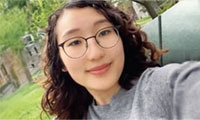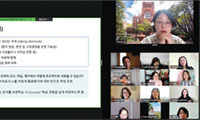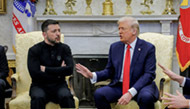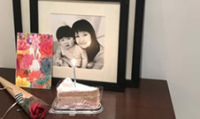The human brain seems to be wired so that it categorizes people by race in the first one-fifth of a second after seeing a face. Brain scans show that even when people are told to sort people by gender, the brain still groups people by race.
Racial bias also begins astonishingly early: Even infants often show a preference for their own racial group. In one study, 3-month-old white infants were shown photos of faces of white adults and black adults; they preferred the faces of whites. For 3-month-old black infants living in Africa, it was the reverse.
This preference reflected what the child was accustomed to. Black infants living in overwhelmingly white Israel didn’t show a strong preference one way or the other, according to the study, published in Psychological Science.
Where does this ingrained propensity to racial bias come from?
Scholars suggest that in evolutionary times we became hard-wired to make instantaneous judgments about whether someone is in our “in group” or not --- because that could be lifesaving. A child who didn’t prefer his or her own group might have been at risk of being clubbed to death.
“It’s a feature of evolution,” says Mahzarin Banaji, a Harvard psychology professor who co-developed tests of unconscious biases. These suggest that people turn out to have subterranean racial and gender biases that they are unaware of and even disapprove of.
I’ve written about unconscious bias before, and I encourage you to test yourself at implicit.harvard.edu. It’s sobering to discover that whatever you believe intellectually, you’re biased about race, gender, age or disability.
What’s particularly dispiriting is that this unconscious bias among whites toward blacks seems just as great among preschoolers as among senior citizens.
Banaji’s research projects show that unconscious racial bias turns up in children as soon as they have the verbal skills to be tested for it, at about age 4. The degree of unconscious bias then seems pretty constant: In tests, this unconscious bias turns out to be roughly the same for a 4- or 6-year-old as for a senior citizen who grew up in more racially oppressive times.
In one set of experiments, children as young as about 4 were shown ambiguous photos of people who could be white or Asian. In some, the people in the photos were smiling; in others, they were frowning.
White American kids disproportionately judged that the people who were smiling were white and that those who were frowning were Asian. When the experiment was conducted in Taiwan with exactly the same photos, Taiwanese children thought that the faces when smiling were Asian, when frowning were white.
The American children were also shown faces that were ambiguous as to whether the person was white or black. In those cases, white kids disproportionately thought that the smiling people were white and the frowning ones were black.
Many of these experiments on in-group bias have been conducted around the world, and almost every ethnic group shows a bias favoring its own. One exception: African-Americans.
Researchers find that in contrast to other groups, African-Americans do not have an unconscious bias toward their own. From young children to adults, they are essentially neutral and favor neither whites nor blacks.
Banaji and other scholars suggest that this is because even young African-American children somehow absorb the social construct that white skin is prestigious and that black skin isn’t. In one respect, that is unspeakably sad; in another, it’s a model of unconscious race neutrality. Yet even if we humans have evolved to have a penchant for racial preferences from a very young age, this is not destiny. We can resist the legacy that evolution has bequeathed us.
“We wouldn’t have survived if our ancestors hadn’t developed bodies that store sugar and fat,” Banaji says. “What made them survive is what kills us.” Yet we fight the battle of the bulge and sometimes win --- and, likewise, we can resist a predisposition for bias against other groups.
One strategy that works is seeing images of heroic African-Americans; afterward, whites and Asians show less bias, a study found. Likewise, hearing a story in which a black person rescues someone from a white assailant reduces anti-black bias in subsequent testing. It’s not clear how long this effect lasts.
Deep friendships, especially romantic relationships with someone of another race, also seem to mute bias --- and that, too, has implications for bringing young people together to forge powerful friendships.
“If you actually have friendships across race lines, you probably have fewer biases,” Banaji says. “These are learned, so they can be unlearned.”
스마터리빙
more [ 건강]
[ 건강]이제 혈관 건강도 챙기자!
[현대해운]우리 눈에 보이지 않기 때문에 혈관 건강을 챙기는 것은 결코 쉽지 않은데요. 여러분은 혈관 건강을 유지하기 위해 어떤 노력을 하시나요?
 [ 건강]
[ 건강]내 몸이 건강해지는 과일궁합
 [ 라이프]
[ 라이프]벌레야 물럿거라! 천연 해충제 만들기
 [ 건강]
[ 건강]혈압 낮추는데 좋은 식품
[현대해운]혈관 건강은 주로 노화가 진행되면서 지켜야 할 문제라고 인식되어 왔습니다. 최근 생활 패턴과 식생활의 변화로 혈관의 노화 진행이 빨라지고
사람·사람들
more많이 본 기사
- 여성 살해·자녀 납치 한인 ‘수배’
- 한인타운 한복판 주유소서 강도 ‘칼부림’
- 남가주 전역에 ‘물폭탄’… 성탄 연휴 ‘대혼란’
- 체포 불체자 수만명 물류창고에 수감 추진
- [2025년 한 해 ‘진 별’들] 미주 한인사회 원로들 ‘역사의 뒤안길’로
- 최준희, 엄마 故최진실 생일 맞아 추억 “우리 마미 축하”
- “소변 불편한데 주저하다 방광 망가져”
- 선우용여 “아들, 돈 없어 개밥 먹기도..아파트 마련해줬다”
- ‘라스베가스에서 만난 한인들’
- “대학 학자금 상환 안하면 임금 압류한다”
- 한화 “필리조선소서 미군 핵잠 건조하기 위한 준비 착수”
- 서태지, 딸·엘리와 1년 만에 근황 “좋은 소식 없어 안타까워”
- 트럼프, 李대통령에 ‘백악관 황금열쇠’ 선물… “최고의 협력관계”
- 크리스마스 연휴 음주운전 ‘꼼짝마’
- 원·달러 환율, 당국 개입에 42원 폭락
- 바야흐로 ‘귀금속 시대’… 금·은·구리까지 사상 최고
- H-1B ‘10만 달러 수수료’ 연방법원, 이의소송 기각
- 백악관, 군에 “베네수엘라 원유 격리하라” 총력 지시
- 난방기 뜯자 ‘비밀공간’ 은신 마피아 보스 체포
- 우크라이나도 “Merry Christmas!”… 지구촌 성탄 축하
- 다운타운 LA 라이브에 등장한 아이스링크
- 오헌, 샌디에고 떠나 피츠버그와 입단 합의… 송성문에겐 기회
- [송년 행사] LA 코리아타운 라이온스클럽
- LA 마약조직 집중 단속 갱단원 등 수백명 체포
- 새해 더 건강해지기 위한 의사의 과학적 조언 10가지
- 팔레스타인서 구금된 한인 여성 무사 귀환
- CBS가 보류한 ‘불법체류자 추방’ 보도, 캐나다서 원본 유출
- 피클볼이 바꾸는 부동산의 얼굴
- 중산층이 집을 사지 않는다?… 챗GPT가 내다본 주택시장 미래
- [송년 행사] 한미동맹연합회
- 북한인, 아마존 위장취업 대거 적발
- [송년 행사] LA 북부한인회
- 테슬라, “비상사태 시 차문 안 열려”
- 쿡, 나이키 주식 매입 2005년부터 사외이사
- 한글학교 온라인 교사연수 성료
- 최강팀 OKC 천적으로 떠오른 샌안토니오… 4패 중 2패 안겨
- 뚜레쥬르, 뉴욕시 맨해튼 매장 오픈
- [성탄절 앞둔 우울한 경제상황] ‘내 코가 석자’… 기부 급감
- 로비 단서 혹은 과대포장?…3천쪽 통일교 내부문건 살펴보니
- 北 “신형장거리대공미사일 동해상 시험발사”…김정은 참관
- [스티브 강 ‘인사이드 미국’] 2026 중간선거: 트럼프 지지율 하락이 말해주는 것
- 미·중 무역전쟁 휴전 지속… 반도체 관세도 보류
- 첫 드라이브 스루 매장 BBQ, 뉴저지에 첫 개장
- 담합의 독과점법 위반 AB 325
- [유혜미 칼럼] 치솟는 환율, 경제 지표의 역설
- 2026년 ‘올해의 컬러’ 전격 공개… 팬톤의 파격적 선택도 포함
- [윌셔에서] 우리 안의 ‘생각하는 사람’을 깨울 시간
- [기고] 안정의 기준은 어떻게 제도가 되었나
- [만화경] 해수부 부산시대
- 내년 회사채 사상 최대 2조2,500억달러 규모
1/5지식톡

-
 미 육군 사관학교 West Poin…
0
미 육군 사관학교 West Poin…
0https://youtu.be/SxD8cEhNV6Q연락처:wpkapca@gmail.comJohn Choi: 714-716-6414West Point 합격증을 받으셨나요?미 육군사관학교 West Point 학부모 모…
-
 ☝️해외에서도 가능한 한국어 선생님…
0
☝️해외에서도 가능한 한국어 선생님…
0이 영상 하나면 충분합니다!♥️상담신청문의♥️☝️ 문의 폭주로 '선착순 상담'만 진행합니다.☎️ : 02-6213-9094✨카카오톡ID : @GOODEDU77 (@골뱅이 꼭 붙여주셔야합니다…
-
 테슬라 자동차 시트커버 장착
0
테슬라 자동차 시트커버 장착
0테슬라 시트커버, 사놓고 아직 못 씌우셨죠?장착이 생각보다 쉽지 않습니다.20년 경력 전문가에게 맡기세요 — 깔끔하고 딱 맞게 장착해드립니다!장착비용:앞좌석: $40뒷좌석: $60앞·뒷좌석 …
-
 식당용 부탄가스
0
식당용 부탄가스
0식당용 부탄가스 홀세일 합니다 로스앤젤레스 다운타운 픽업 가능 안녕 하세요?강아지 & 고양이 모든 애완동물 / 반려동물 식품 & 모든 애완동물/반려동물 관련 제품들 전문적으로 홀세일/취급하는 회사 입니다 100% …
-
 ACSL 국제 컴퓨터 과학 대회, …
0
ACSL 국제 컴퓨터 과학 대회, …
0웹사이트 : www.eduspot.co.kr 카카오톡 상담하기 : https://pf.kakao.com/_BEQWxb블로그 : https://blog.naver.com/eduspotmain안녕하세요, 에듀스팟입니다…
케이타운 1번가
오피니언
 스티브 강 전 한인민주당협회 회장
스티브 강 전 한인민주당협회 회장 [스티브 강 ‘인사이드 미국’] 2026 중간선거: 트럼프 지지율 하락이 말해주는 것
 김홍일 케이유니콘인베스트먼트 대표
김홍일 케이유니콘인베스트먼트 대표 [기고] 안정의 기준은 어떻게 제도가 되었나
 유혜미 한양대 경제금융대학 교수
유혜미 한양대 경제금융대학 교수 [유혜미 칼럼] 치솟는 환율, 경제 지표의 역설
 성민희 소설·수필가
성민희 소설·수필가 [윌셔에서] 우리 안의 ‘생각하는 사람’을 깨울 시간
 김정곤 / 서울경제 논설위원
김정곤 / 서울경제 논설위원 [만화경] 해수부 부산시대

[왈가 왈부] 내란재판부·정통망법 또 수정… 졸속·땜질 아닌가요
 정숙희 논설위원
정숙희 논설위원온라인쇼핑과 반품, 그리고 그 이후
 파리드 자카리아 / 워싱턴포스트 칼럼니스트 / CNN ‘GPS’ 호스트
파리드 자카리아 / 워싱턴포스트 칼럼니스트 / CNN ‘GPS’ 호스트 트럼프의 새 독트린 “미국을 다시 왜소하게”
 김동찬 시민참여센터 대표
김동찬 시민참여센터 대표 [미국은 지금] MAGA의 분열, 예견된 균열의 시작
1/3지사별 뉴스

“온 세상에 평화를⋯”
숨가쁘게 달려온 2025년을 이제 1주일 남짓 남긴 채 크리스마스 이브를 맞는다. 다사다난했던 한 해를 되돌아보며 마무리하는 연말 시즌과 크리…
H-1B비자 고임금·경력자에 우선권

‘올해는 ICE 이민자 체포 광풍의 해’
올 한해동안 버지니아와 메릴랜드, DC 등에서 연방 이민당국에 체포된 사람이 1만명이 훌쩍 넘는 것으로 조사됐다. 또 미 전국적으로는 22만명…
“ATM기 사용하기 겁나네”

연말 ‘로드레이지’ 비극… 한인 총격 피살
연말을 맞아 도로 위에서 순간적으로 벌어진 운전 중 시비가 40대 한인 가장의 총격 피살 비극으로 이어졌다. 워싱턴주 레이시 경찰국과 서스턴 …
[‘로드 레이지’ 한인 피살 현장 상세 상황] 끼어들기 시비가 비극으로… 차에서 내려 “쏴봐라” 언쟁

오늘 하루 이 창 열지 않음 닫기 





















































.png)


댓글 안에 당신의 성숙함도 담아 주세요.
'오늘의 한마디'는 기사에 대하여 자신의 생각을 말하고 남의 생각을 들으며 서로 다양한 의견을 나누는 공간입니다. 그러나 간혹 불건전한 내용을 올리시는 분들이 계셔서 건전한 인터넷문화 정착을 위해 아래와 같은 운영원칙을 적용합니다.
자체 모니터링을 통해 아래에 해당하는 내용이 포함된 댓글이 발견되면 예고없이 삭제 조치를 하겠습니다.
불건전한 댓글을 올리거나, 이름에 비속어 및 상대방의 불쾌감을 주는 단어를 사용, 유명인 또는 특정 일반인을 사칭하는 경우 이용에 대한 차단 제재를 받을 수 있습니다. 차단될 경우, 일주일간 댓글을 달수 없게 됩니다.
명예훼손, 개인정보 유출, 욕설 등 법률에 위반되는 댓글은 관계 법령에 의거 민형사상 처벌을 받을 수 있으니 이용에 주의를 부탁드립니다.
Close
x